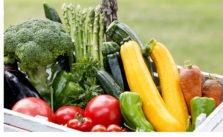Poliquin’s Top 10 Carb Intake Rules for Optimal Body Composition by charles poliquin
March 11, 2014 | by abidine

1. Eliminate Grains, Particularly Wheat.
Wheat raises the blood sugar levels quickly in the same way as plain table sugar. White flour-based foods such as white bread or corn flakes are a poor source of fiber and they have a high glycemic content, meaning they cause a quick spike in insulin.
The presence of insulin tells the liver that food intake is meeting energy requirements so lipolysis, or the breakdown of fat for energy from body stores, becomes unnecessary. The insulin spike stops the body from burning fat for fuel. Any excess sugar or food intake is saved for future energy requirements and stored as fat. Constantly high insulin levels make the body resistant to insulin and leads to diabetes. This is why it’s best to eliminate grains, particularly white grains, and do resistance training –you’ll improve insulin sensitivity.
Research shows that eating a breakfast of whole wheat grains such as barley or rye results in significantly better glucose tolerance and insulin sensitivity than a breakfast of white wheat bread. Plus, whole wheat breakfasts improve glucose uptake at lunch and dinner. Whole wheat would be better than white wheat—also nicknamed “white death,” but no wheat is your best bet (see number 2). We’re going for low carb here, so I recommend eliminating your grains when possible and getting your carbs from fruits and vegetables.
Indeed, a review published in the European Journal of Clinical Nutrition points to the fact that vegetables and fruit are preferable to even low glycemic wheat and grain-based foods because they have qualities besides simply promoting glucose tolerance to recommend them. The benefits will be revealed below.
2. Yes, Eliminate Grains, Part II!
The grains that make up the Gliadin family such as oats, wheat, and spelt are the most common food allergen because they contain gluten. People of the Celtic ancestry, like the Irish, are more likely to be allergic to gluten. In fact, the National Health Institute estimates that gluten allergies affect almost one percent of Americans, and this number is likely underestimated because this allergy often goes undiagnosed.
An allergy to gluten is called celiac disease and means that the sufferer will have serious digestive damage from eating foods containing gluten, which causes a wide variety of other health problems including weakness, anemia, malnutrition, osteoarthritis, bone disorders, stomach cancer, and abdominal bloating to name a few—all problems that will trip you up if you want to gain muscle and lose fat.
You can be allergic to wheat and not have celiac disease as well, and even if you’re body isn’t intolerant to wheat and gluten, removing them from the diet is recommended for optimal body composition, digestion, and health.
Besides raising insulin levels in the body and providing a large carbohydrate and caloric punch, the body releases cortisol in response to the stressor caused by the gluten allergy. Research shows that cortisol partially prevents the harmful effect of gluten in the body. The problem is that cortisol results in muscle degradation and elevated levels suppress immune response and lead to adrenal exhaustion manifesting in the form of fatigue, depression, insomnia, and illness—not good!
3. The Main Source of Carbs Should be Fibrous.
Fibrous carbs, including many green vegetables, typically have very low carbohydrate content. Their inherent high fiber brings about a very moderate insulin response, thus making them an ideal fat loss food. Research shows that the higher fiber content of most vegetables will delay carbohydrate absorption, favorably modifying the glucose response. Dark green vegetables usually have a large antioxidant content as well (not as great as dark fruits, but still a sizeable amount). The best sources of fibrous carbs include:
● Kale
● Broccoli
● Lettuce
● Cabbage
● Cauliflower
● Mushrooms
● Green beans
● Onions
● Asparagus
● Cucumber
● Spinach
● All Forms of Peppers
● Zucchini
● Cauliflower
4. The Darker the Fruit, the Better it is For You
Dark fruits tend to have very thin skin, meaning they need to produce more antioxidants to protect themselves from the sun. In contrast, light colored fruits with thick skins such as bananas and melons have lower antioxidant content. Dark red, blue, and purple fruits are great anti-inflammatory foods because the extra antioxidants help get rid of free radicals that cause aging and inflammation.
Research shows that berries with high antioxidant content such as bilberries, blueberries, cranberries, and raspberries decrease glucose response in healthy subjects, slowing digestion. Researchers suggest that the bioactive polyphenols that dark-colored fruits contain promote greater insulin sensitivity. In addition, there is evidence that adding berries rich in polyphenols to high-glycemic foods that normally trigger a negatively high spike in glucose can moderate the body’s response, producing a remarkably low insulin response.
5. The Darker the Fruit, the Better it is For You, Part II
The darker the fruit, the lower the glycemic load. I referred to this above, but be aware that the reason dark fruits promote insulin sensitivity is that they produce a low glycemic response in the body.
Let me call your attention to the fact that not only will you have a better glucose response with dark fruits, but adding them to high-glycemic foods appears to moderate the body’s response as mentioned in number four. Researchers suggest dark fruit with high antioxidant content lower the glucose response of other foods because they work as enzyme inhibitors. Take note that it is necessary to fully chew berries or fruit to release the polyphenols to work their magic on the glycemic index of carbs.
Again, when you compare berries and cherries with bananas and pineapple, the latter two fruits have a significantly higher glycemic index. Of course, this applies to fruits in their natural state; when grapes become raisins, their glycemic index goes up because of dehydration of the fruit.
6. Replace Grains with Various Forms of Lettuce in Sandwiches
This rule is promoted by Jonny Bowden, author of “Living The Low Carb Life.” Instead of using bread, use dark leafy greens to wrap the meat. This will slow down the glycemic index and help shift the acid/alkaline base in your favor. Research shows that eating low glycemic foods or adding herbs to high glycemic foods that have a glycemic lowering effect such as flaxseed or fenugreek, reduces pH and glucose response.
Besides, the dark greens will provide more antioxidants, vitamins, and minerals as opposed to grains, which are lower in micronutrients. For example, phytates—the salts of phytic acid that are found in high content in whole grains—block the absorption of many minerals, especially zinc, iron, manganese, and calcium.
7. Limit Fructose Intake
Even though fruits are great foods loaded with nutrients, they also contain fructose. Fructose in too high quantities can slow down thyroid function, reducing metabolism and negatively affecting body composition. Research shows that excess fructose in rats results in decreased ATP in the liver, leading to less thyroid hormone uptake, and a reduction in fat burning.
Too much fructose in the diet also increases glycation. Glycation in layman’s terms is browning, like the browning that makes crust on bread. Glycation is the cross linking of proteins (and DNA molecules) caused by sugar aldehydes reacting with the amino acids on the protein molecule to create Advance Glycosylation End-Products (AGEs). If you want to see protein cross-linking in action, cut an apple in half and watch it turn yellow!
Why is the worst glycation agent fructose? Because it does not raise insulin. In other words, the insulin is not getting it into muscle cells, meaning it lingers around in the body and wreaks metabolic havoc. As nutrition expert Robert Crayhon used to say: fructose is like the guest that won’t go home once the party is over.
One study compared the effect of a diet high in fructose with one high in glucose. After ten weeks, the fructose group had significantly elevated levels of cholesterol and insulin, while insulin sensitivity and fat metabolism decreased. They also gained significantly more total fat and an even greater percentage of abdominal fat than the glucose group. Further research shows that this extra insulin causes dysfunction of cells, and in addition to the negative effect on body composition, it accelerates aging, vascular degeneration, and development of diabetes.
In contrast, there is evidence that consuming a post-exercise meal with glucose as the carbohydrate source results in greater fat oxidation and a more favorable metabolic response than if fructose is used. A study found that long-term high fructose consumption accelerates skin and bone aging because it modifies DNA, damaging tissue collagen. While this doesn’t speak directly to our topic of body composition, it points to the damaging effect of excessive fructose on health and longevity.
Take note that Robert Crayhon recommends that the average American eat no more than 5 to 10 grams of fructose a day! For very active individuals, 20 to 30 grams of fructose should be the maximum intake.
One of the worst sources of glycated fructose are weight loss bars that contain high fructose corn syrup, like the ones that used to be sold by a famous Texan verbally abusive lawyer turned weight loss guru. Then again, he was fat, and still is!
To check your glycation levels, ask your doctor to measure the concentration of glycated hemoglobin in your blood. A study from England revealed that glycated hemoglobin is the best tests to predict mortality—far better than cholesterol, blood pressure, or body mass index.
8. The Best Time to Load Up On Carbs is the First Ten Minutes Following Your Workout
Insulin sensitivity is at its highest after a workout making this the critical time to take in carbs to maximize muscle mass gains. Originally, based on the research that was available at the time, I typically recommended two g/kg of bodyweight. Over the years, after being exposed to more research and discussing it with my colleagues, I have come to the conclusion that it should be a reflection of the training volume for the training session. The greater the number of reps per training unit, the greater the carbohydrate intake.
Of course, all reps are not equal. A squat or deadlift repetition is more demanding than a biceps curl or triceps extension rep. By the same token, three reps of slow tempo squats has a different caloric demand than three reps of the power clean. As a general rule, I would recommend the following carbohydrate intake based on training volume for a given workout:
* 12-72 reps per workout: 0.6 g/kg/lean body mass (lbm)
* 73-200 reps per workout: 0.8 g/kg/lbm
* 200-360 reps per workout: 1.0 g/kg/lbm
* 360-450 reps per workout: 1.2 g/kg/lbm
Take note that these recommendations are based on lean body mass, not your weight. To calculate lean body mass you need to know your lean mass percentage (or body fat percentage and subtract that number from 100). Then multiply this percent by your body mass and you’ll get your lean body mass.
Regarding the source of carbohydrates post-workout, I have experimented with various sources and I prefer fruit juices with a high glycemic index such as pineapple or grape to provide 15 to 20 percent of the carbs, with the rest of the carbs coming from carbohydrate powders. The powder should contain various types of maltodextrin and a minimal quantity of ribose. For variety, I use different types of juice such as a berry blend. You can also use any type of mushy fruit like bananas or peaches. For seriously underweight athletes, I may use more pineapple juice and/or corn flakes to drive the glycemic index upwards. Instead of using maltodextrin, you can also use desiccated honey.
9. Use Supplements That Promote Insulin Sensitivity with High-Carb Post-Workout Meals
A number of supplements support glucose uptake and promote insulin sensitivity, including nutrients such as taurine, arginine, magnesium, and R-form alpha lipoic acid. Adding them to your post-workout meal will help send glucose to muscle cells instead of fat cells.
Indeed, a review from the journal Biological Trace Element Research reports that magnesium plays an important role in carbohydrate metabolism, while influencing the activity of hormones that control blood glucose levels. Low magnesium can cause insulin resistance, which may result in the kidneys being unable to retain magnesium during episodes of hyperglycemia, creating a downward spiral of magnesium deficiency, fat gain, and subsequently diabetes.
Many herbs such as American ginseng, fenugreek, and bitter melon also facilitate glucose uptake by muscle cells. Research shows that adding fenugreek to a whole wheat bread will result in greater insulin sensitivity and more glucose uptake than consuming whole wheat bread without fenugreek. Similar results were evident when flax was added to a wheat chapatti, indicating flax may be a good addition as well.
10. Add Protein to Your Post-Workout Carb Meal
Protein is a critical part of post-workout nutrition because your muscles are primed for feeding and need amino acids for peak recovery. Essential amino acids (EAAs), particularly the branched-chain amino acids (BCAAs), have been shown to trigger protein synthesis and fat loss. Taking BCAAs will also allow you train harder and longer because the amino acids enhance fat oxidation and research shows that individuals with a higher BCAA intake in their diets have lower body weight and better body composition.
Taking as much as 40 grams of EAAs after heavy training results in an anabolic shift from muscle protein degradation to protein synthesis. I suggest using 15 grams of protein for every 50 lbs of bodyweight—you will increase glycogen storage by as much as 40 percent, and will boost release of the anabolic hormone, IGF-1.
RELATED POSTS
View all


